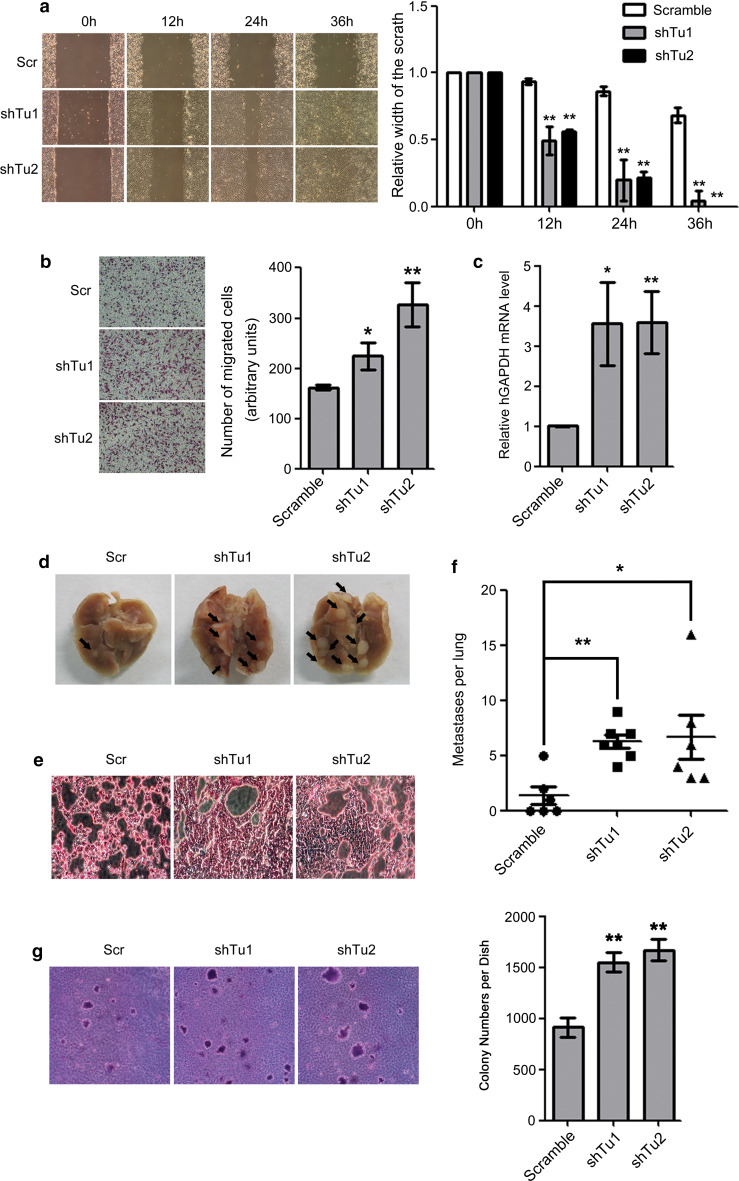Fig. 3.
Effects of TUFM knockdown on cell migration, invasion, and metastasis. a Cell migration was examined by wound-healing assays. Scr, scramble control (shRNA against scrambled sequence); shTu, TUFM knockdown. Cell morphology was examined at the indicated time points after scratching. Data shown are a representative result of three independent experiments (left) with statistical analysis (right). b Cell migration was examined by transwell assays. Data shown are a representative result of three independent experiments (left) with statistical analysis (right). c At 7 weeks after subcutaneous injection of control or TUFM-knockdown A549 cells, the levels of circulating tumor cells in the blood were determined by real-time PCR. Statistical data for three independent experiments are presented. d Lungs of nude mice were surgically isolated and photographed 2 months after tail vein injection of control or TUFM-knockdown A549 cells. Lung surface metastatic nodules are indicated by black arrows. e Histologic analysis by hematoxylin and eosin staining of lungs 2 months after tail vein injection. f The number of surface metastases per lung was determined using a dissecting microscope, and statistical analysis is presented. g The effect of TUFM knockdown on anchorage-independent growth of A549 cells was determined by a colony formation assay in soft agar. Data shown are a representative result of three independent experiments (left) with statistical analysis (right)

